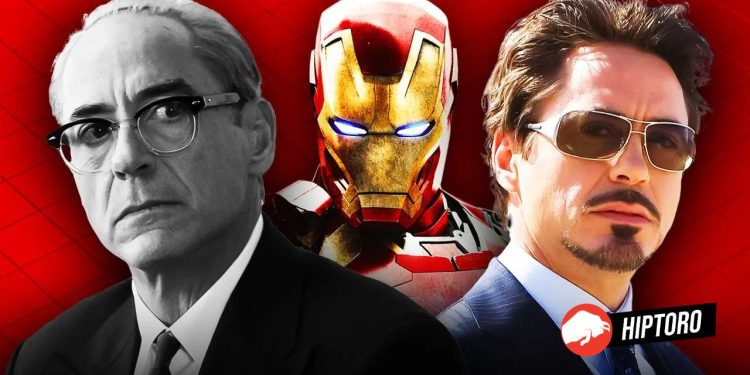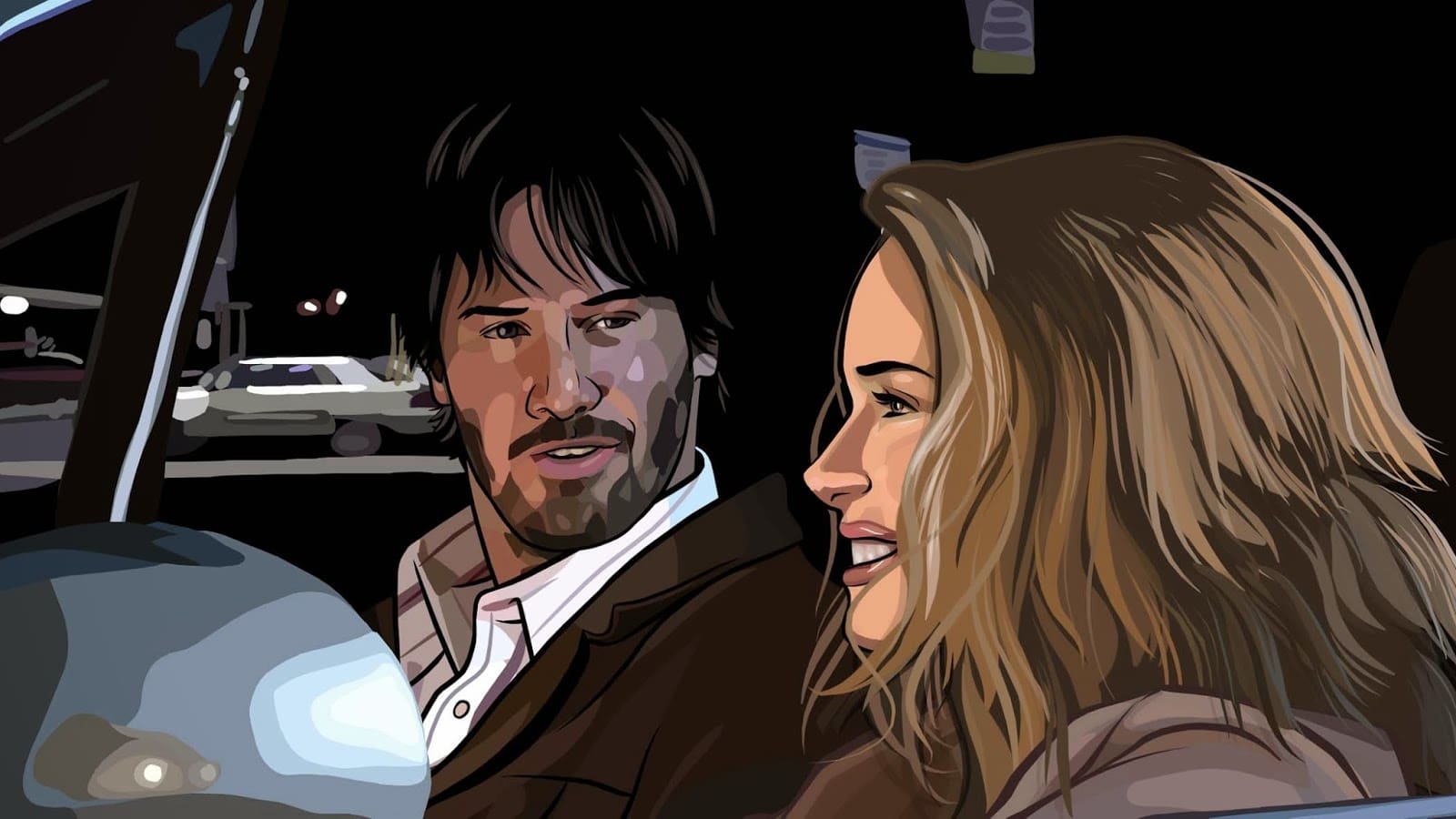Robert Downey Jr., an actor whose career has been as dramatic and diverse as the roles he’s played, stands as a beacon of resilience and transformation in Hollywood. From early acclaim to personal struggles and a phoenix-like rise to superstardom, Downey’s journey is a testament to talent, perseverance, and the power of second chances.
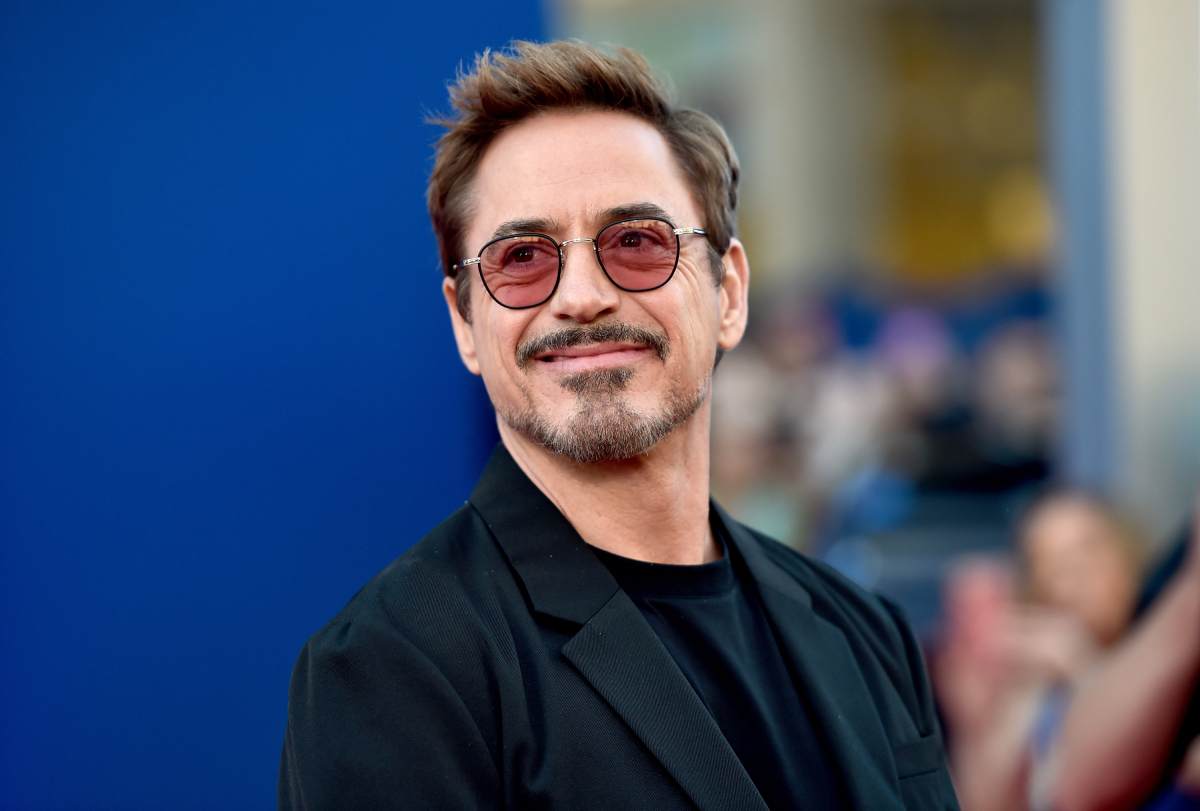
This article delves into the Top 10 movies of Robert Downey Jr, providing an in-depth analysis of each film’s plot, character development, thematic elements, actors’ performance, cultural impact, and critical reception. Furthermore, we explore Downey’s evolution as an actor, how these films reflect his growth and versatility, and conclude with reflections on his legacy and influence on contemporary cinema.
The Evolution of Robert Downey Jr. as an Actor
Before diving into the top 10 movies, it’s crucial to understand Robert Downey Jr.’s evolution as an actor. Downey’s career began in the early 1980s, and he quickly gained attention for his natural talent and ability to imbue his characters with depth and complexity. However, his early success was marred by personal struggles, leading to a period of decline. It was his comeback roles in the 2000s, particularly as Tony Stark in “Iron Man,” that marked a turning point, showcasing his remarkable range and charisma. This evolution from a talented yet troubled actor to one of Hollywood’s most bankable stars illustrates Downey’s resilience, adaptability, and enduring talent.
1. Iron Man (2008)
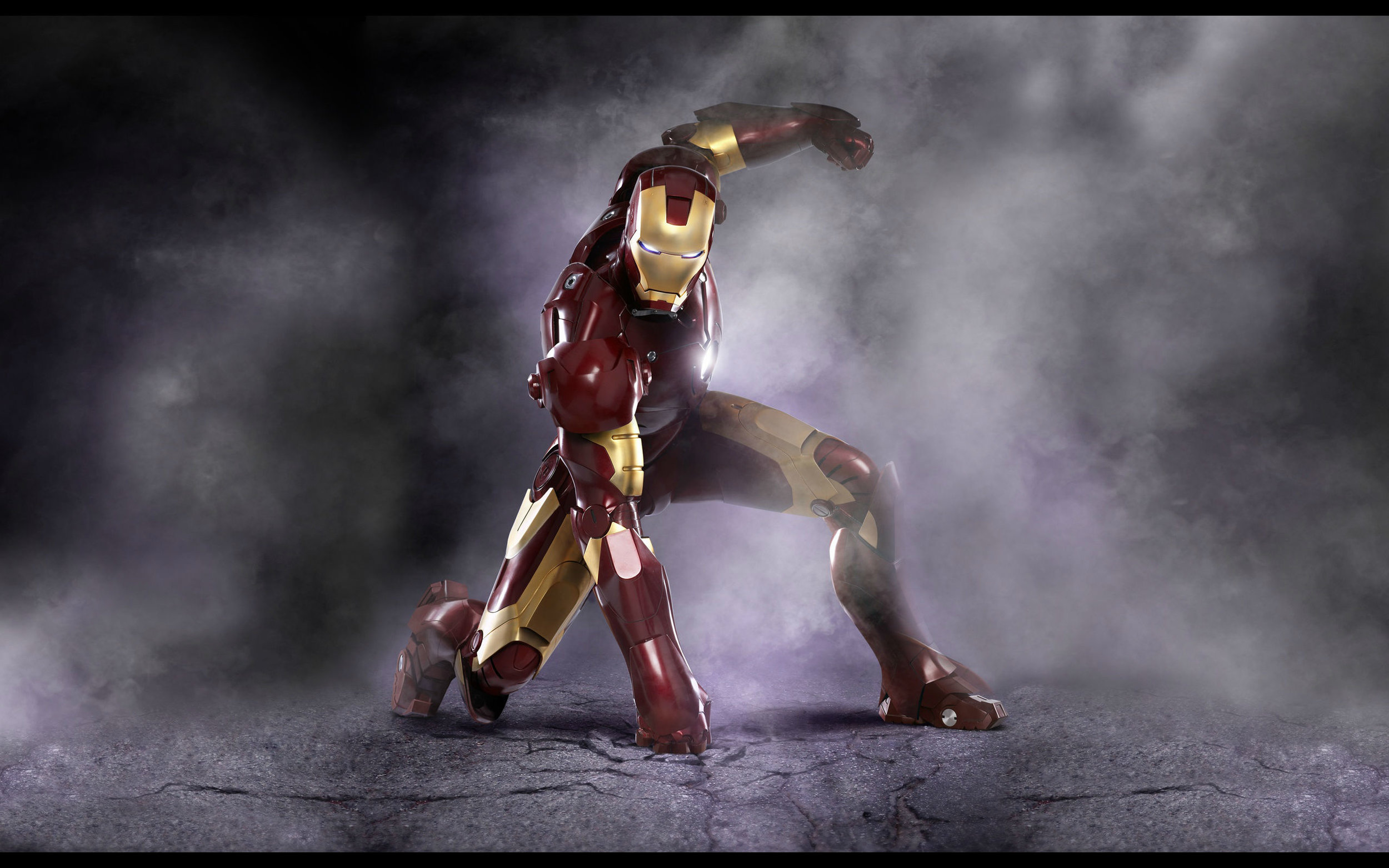
“Iron Man,” released in 2008, emerged not just as a film but as a phenomenon that significantly altered the trajectory of Robert Downey Jr.’s career, elevating him to the status of a Hollywood leading man and serving as the cornerstone for the expansive Marvel Cinematic Universe (MCU). In this film, Downey Jr. embodies Tony Stark, a character whose complexity lies in his transformation from a genius billionaire playboy into a conscientious superhero. This role demanded a balance of charm, wit, and a palpable vulnerability, attributes that Downey Jr. delivered with unparalleled mastery.
The narrative of “Iron Man” is ingeniously structured around Stark’s ordeal of being captured by terrorists, during which he constructs the Iron Man suit as a means of escape. This pivotal moment leads to his metamorphosis into a hero who is not just physically powerful but also significantly more introspective and responsible. The character arc of Tony Stark is meticulously developed, transitioning from a state of careless indulgence in his own genius and wealth to embracing a profound sense of accountability towards humanity.
Critics and audiences alike lauded Downey Jr.’s portrayal, drawing parallels between the actor’s personal journey of recovery and resurgence with that of Stark’s path to redemption. His performance was not only seen as a professional triumph but also as a personal victory, marking his successful return to mainstream cinema after years of battling personal issues.

Furthermore, “Iron Man” distinguished itself as a groundbreaking work within the superhero genre. It eschewed the conventional tropes and presented a more relatable, flawed, yet ultimately heroic character in Tony Stark. This innovative approach, combined with Downey Jr.’s magnetic performance, received widespread critical acclaim and set new standards for storytelling within the genre.
The cultural impact of “Iron Man” extends beyond its immediate success at the box office. It laid the groundwork for the Marvel Cinematic Universe, an ambitious and unprecedented series of interconnected films that have dominated global cinema. The movie’s success demonstrated the potential for superhero films to explore complex characters and themes, thereby appealing to both comic book enthusiasts and mainstream audiences. It also established a blueprint for future superhero movies, highlighting the importance of character development, narrative depth, and a seamless blend of action and humor.
In essence, “Iron Man” stands as a testament to Robert Downey Jr.’s indelible impact on the film industry, showcasing his ability to breathe life into complex characters and redefine genres. His portrayal of Tony Stark not only revitalized his career but also forever changed the landscape of superhero cinema, making “Iron Man” a pivotal chapter in both his personal and professional life.
2. Sherlock Holmes (2009)
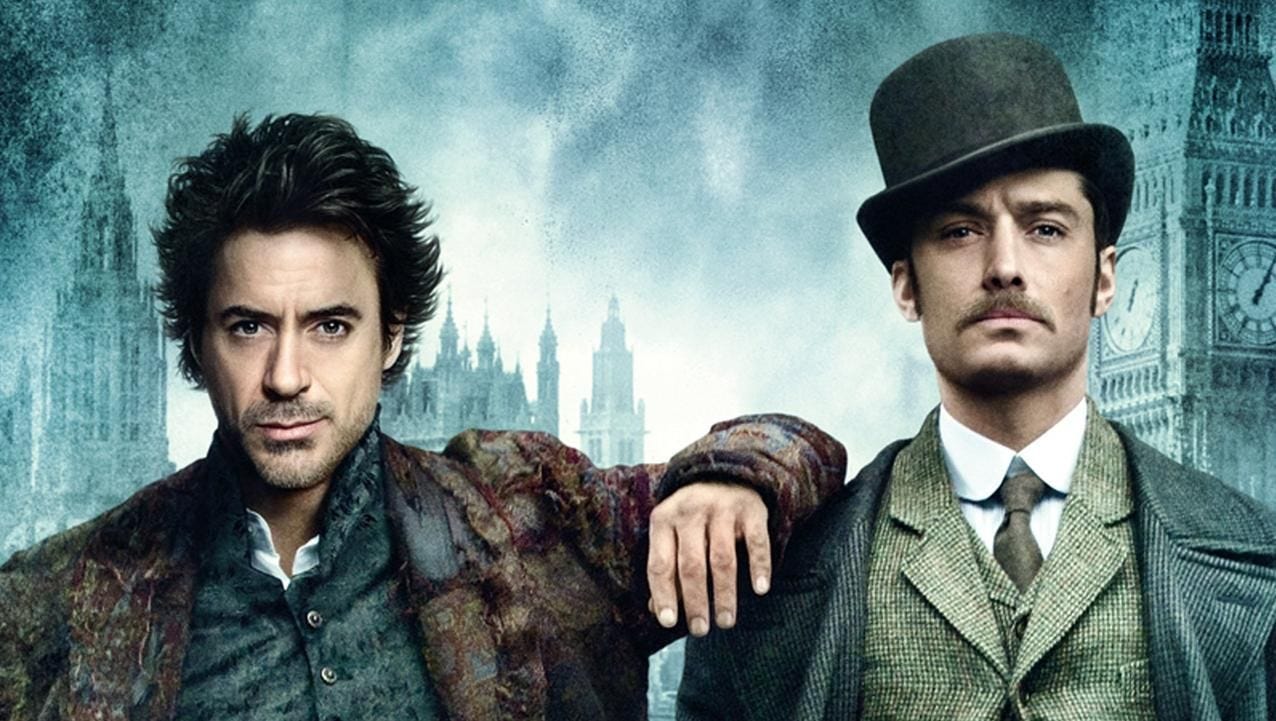
In 2009, Robert Downey Jr. took on the iconic role of Sherlock Holmes in Guy Ritchie’s film of the same name, a portrayal that injected new life into Arthur Conan Doyle’s legendary detective. Downey’s Holmes was a departure from the stoic, purely intellectual solver of mysteries that audiences had traditionally seen. Instead, Ritchie and Downey presented a Holmes who was as much a man of action as he was a thinker, a master of deduction who was also adept with his fists.
The film unfolds in 1890s London, a city on the brink of the modern era, where Holmes and his loyal companion Dr. John Watson, played with gruff warmth by Jude Law, navigate through a web of intrigue, mystery, and sorcery to thwart the dark plans of Lord Blackwood. The plot is dense with twists and turns, challenging Holmes not just physically but intellectually, testing his deductive skills to their limits.
Downey’s portrayal was critically acclaimed for bringing a unique blend of eccentricity, physicality, and intellect to the role. He depicted Holmes as a deeply complex character, battling inner demons and using his intellect to escape the shadows that lurked within. This version of Holmes was a radical departure from previous portrayals, making him more accessible and human to the audience. Downey’s performance showcased his range and ability to reinterpret well-known characters, making them distinctly his own while remaining true to the essence that has made them enduring figures in literature and film.
The dynamic between Holmes and Watson in this film is also worth noting. Downey and Law’s chemistry added depth to their characters’ relationship, portraying them as not just partners in crime-solving but as brothers-in-arms with a deep and abiding respect for one another. This added an emotional layer to the film that elevated it above the standard detective fare.

“Sherlock Holmes” was both a critical and commercial success, reinvigorating interest in Conan Doyle’s works while introducing the detective to a new generation. The film’s impact was significant, redefining the character of Holmes in the popular imagination and setting a new standard for adaptations of classic literature. It proved that, with the right actor and vision, even the most well-trodden stories could feel fresh and exciting.
Moreover, the film underscored Downey’s versatility as an actor. Coming off the heels of “Iron Man,” “Sherlock Holmes” showcased his ability to jump between genres, from superhero blockbusters to period detective dramas, without missing a beat. His Holmes was both cerebral and visceral, showcasing Downey’s skill at blending physical comedy with dramatic depth.
“Sherlock Holmes” also highlighted Downey’s capacity to lead a franchise beyond the realm of superheroes, proving his draw at the box office and his ability to engage audiences with complex, charismatic characters. The film’s success led to a sequel, “Sherlock Holmes: A Game of Shadows,” further cementing Downey’s position as one of Hollywood’s most versatile and bankable stars.
In conclusion, “Sherlock Holmes” represents a pivotal moment in Robert Downey Jr.’s career, showcasing his exceptional talent and the broad appeal of his cinematic contributions. His portrayal of Holmes not only brought a new dimension to the character but also demonstrated Downey’s ability to leave a lasting imprint on iconic roles, ensuring their relevance and appeal for contemporary audiences. This film stands as a testament to Downey’s enduring influence in Hollywood and his remarkable capacity to reinvent classic characters for the modern age.
3. Tropic Thunder (2008)
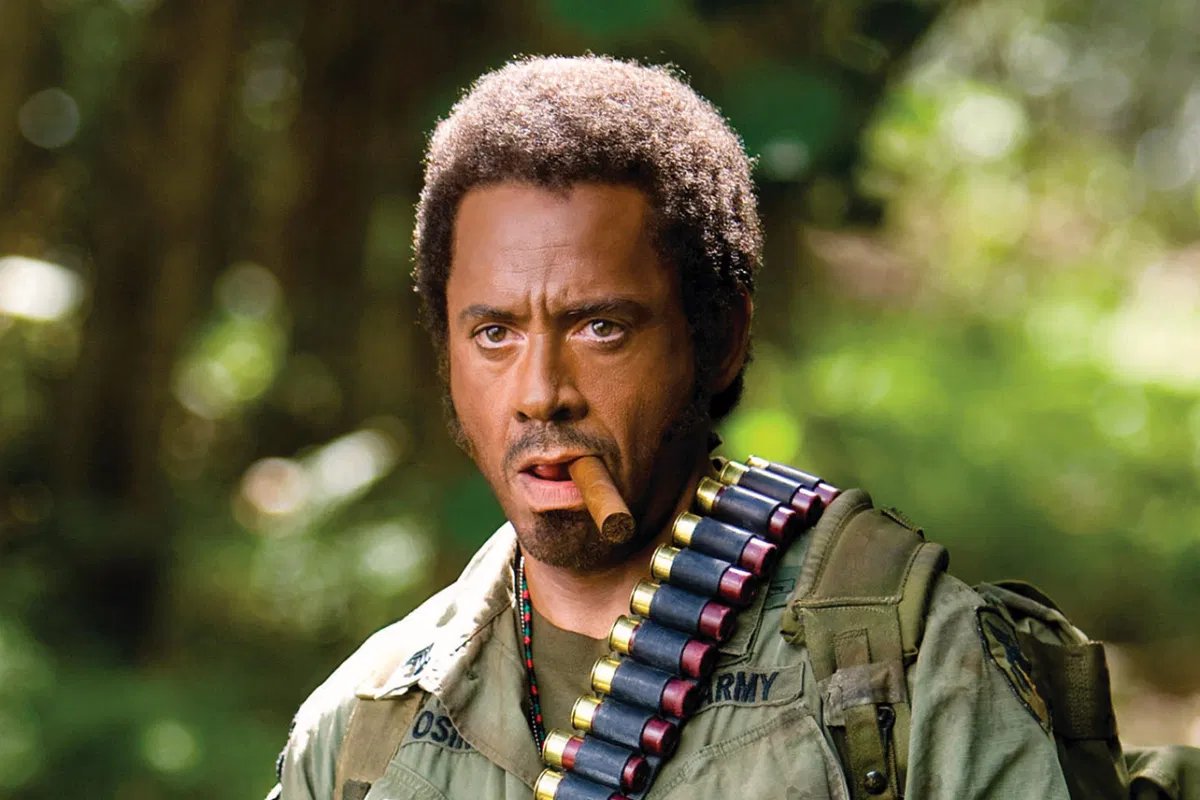
In 2009, Robert Downey Jr. took on the iconic role of Sherlock Holmes in Guy Ritchie’s film of the same name, a portrayal that injected new life into Arthur Conan Doyle’s legendary detective. Downey’s Holmes was a departure from the stoic, purely intellectual solver of mysteries that audiences had traditionally seen. Instead, Ritchie and Downey presented a Holmes who was as much a man of action as he was a thinker, a master of deduction who was also adept with his fists.
The film unfolds in 1890s London, a city on the brink of the modern era, where Holmes and his loyal companion Dr. John Watson, played with gruff warmth by Jude Law, navigate through a web of intrigue, mystery, and sorcery to thwart the dark plans of Lord Blackwood. The plot is dense with twists and turns, challenging Holmes not just physically but intellectually, testing his deductive skills to their limits.
Downey’s portrayal was critically acclaimed for bringing a unique blend of eccentricity, physicality, and intellect to the role. He depicted Holmes as a deeply complex character, battling inner demons and using his intellect to escape the shadows that lurked within. This version of Holmes was a radical departure from previous portrayals, making him more accessible and human to the audience. Downey’s performance showcased his range and ability to reinterpret well-known characters, making them distinctly his own while remaining true to the essence that has made them enduring figures in literature and film.

The dynamic between Holmes and Watson in this film is also worth noting. Downey and Law’s chemistry added depth to their characters’ relationship, portraying them as not just partners in crime-solving but as brothers-in-arms, with a deep and abiding respect for one another. This added an emotional layer to the film that elevated it above the standard detective fare.
“Sherlock Holmes” was both a critical and zin Conan Doyle’s works while introducing the detective to a new generation. The film’s impact was significant, redefining the character of Holmes in the popular imagination and setting a new standard for adaptations of classic literature. It proved that, with the right actor and vision, even the most well-trodden stories could feel fresh and exciting.
Moreover, the film underscored Downey’s versatility as an actor. Coming off the heels of “Iron Man,” “Sherlock Holmes” showcased his ability to jump between genres, from superhero blockbusters to period detective dramas, without missing a beat. His Holmes was both cerebral and visceral, showcasing Downey’s skill at blending physical comedy with dramatic depth.
“Sherlock Holmes” also highlighted Downey’s capacity to lead a franchise beyond the realm of superheroes, proving his draw at the box office and his ability to engage audiences with complex, charismatic characters. The film’s success led to a sequel, “Sherlock Holmes: A Game of Shadows,” further cementing Downey’s position as one of Hollywood’s most versatile and bankable stars.
In conclusion, “Sherlock Holmes” represents a pivotal moment in Robert Downey Jr.’s career, showcasing his exceptional talent and the broad appeal of his cinematic contributions. His portrayal of Holmes not only brought a new dimension to the character but also demonstrated Downey’s ability to leave a lasting imprint on iconic roles, ensuring their relevance and appeal for contemporary audiences. This film stands as a testament to Downey’s enduring influence in Hollywood and his remarkable capacity to reinvent classic characters for the modern age.
4. Chaplin (1992)
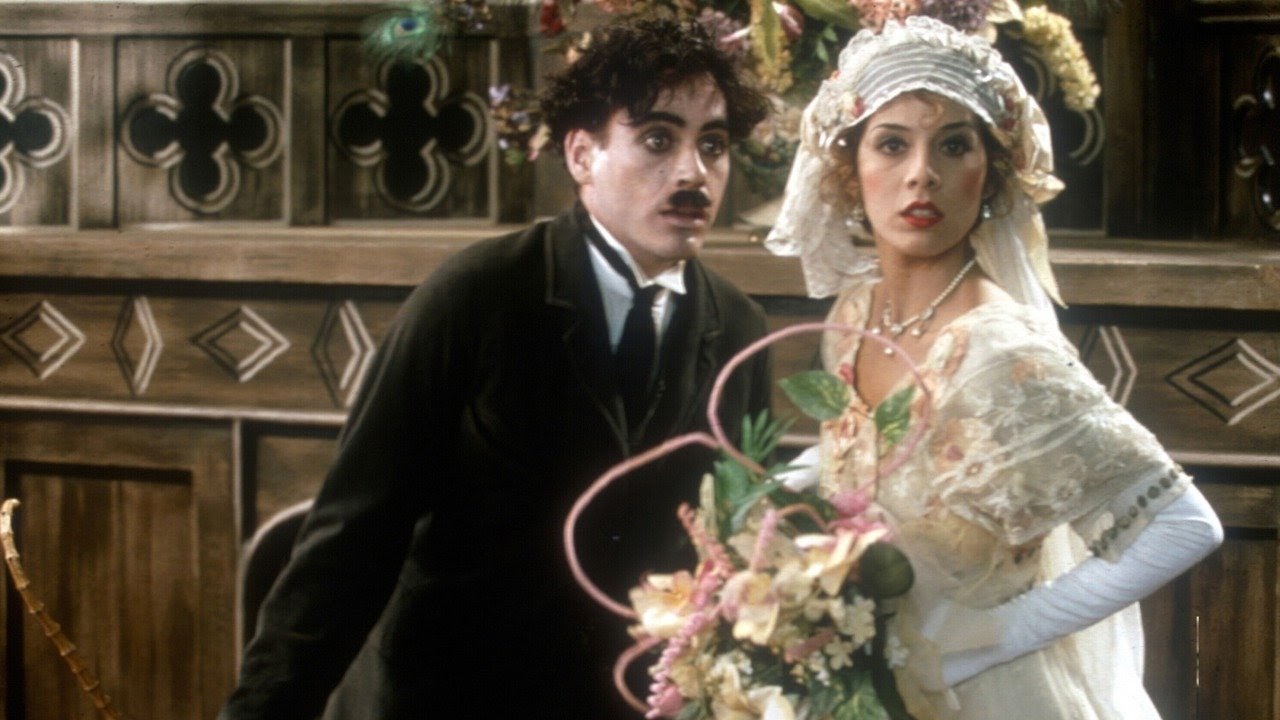
In 2009, Robert Downey Jr. took on the iconic role of Sherlock Holmes in Guy Ritchie’s film of the same name, a portrayal that injected new life into Arthur Conan Doyle’s legendary detective. Downey’s Holmes was a departure from the stoic, purely intellectual solver of mysteries that audiences had traditionally seen. Instead, Ritchie and Downey presented a Holmes who was as much a man of action as he was a thinker, a master of deduction who was also adept with his fists.
The film unfolds in 1890s London, a city on the brink of the modern era, where Holmes and his loyal companion Dr. John Watson, played with gruff warmth by Jude Law, navigate through a web of intrigue, mystery, and sorcery to thwart the dark plans of Lord Blackwood. The plot is dense with twists and turns, challenging Holmes not just physically but intellectually, testing his deductive skills to their limits.
Downey’s portrayal was critically acclaimed for bringing a unique blend of eccentricity, physicality, and intellect to the role. He depicted Holmes as a deeply complex character, battling inner demons and using his intellect to escape the shadows that lurked within. This version of Holmes was a radical departure from previous portrayals, making him more accessible and human to the audience. Downey’s performance showcased his range and ability to reinterpret well-known characters, making them distinctly his own while remaining true to the essence that has made them enduring figures in literature and film.

The dynamic between Holmes and Watson in this film is also worth noting. Downey and Law’s chemistry added depth to their characters’ relationship, portraying them as not just partners in crime-solving but as brothers-in-arms, with a deep and abiding respect for one another. This added an emotional layer to the film that elevated it above the standard detective fare.
“Sherlock Holmes” was both a critical and commercial success, reinvigorating interest in Conan Doyle’s works while introducing the detective to a new generation. The film’s impact was significant, redefining the character of Holmes in the popular imagination and setting a new standard for adaptations of classic literature. It proved that, with the right actor and vision, even the most well-trodden stories could feel fresh and exciting.
Moreover, the film underscored Downey’s versatility as an actor. Coming off the heels of “Iron Man,” “Sherlock Holmes” showcased his ability to jump between genres, from superhero blockbusters to period detective dramas, without missing a beat. His Holmes was both cerebral and visceral, showcasing Downey’s skill at blending physical comedy with dramatic depth.
“Sherlock Holmes” also highlighted Downey’s capacity to lead a franchise beyond the realm of superheroes, proving his draw at the box office and his ability to engage audiences with complex, charismatic characters. The film’s success led to a sequel, “Sherlock Holmes: A Game of Shadows,” further cementing Downey’s position as one of Hollywood’s most versatile and bankable stars.
In conclusion, “Sherlock Holmes” represents a pivotal moment in Robert Downey Jr.’s career, showcasing his exceptional talent and the broad appeal of his cinematic contributions. His portrayal of Holmes not only brought a new dimension to the character but also demonstrated Downey’s ability to leave a lasting imprint on iconic roles, ensuring their relevance and appeal for contemporary audiences. This film stands as a testament to Downey’s enduring influence in Hollywood and his remarkable capacity to reinvent classic characters for the modern age.
5. Zodiac (2007)
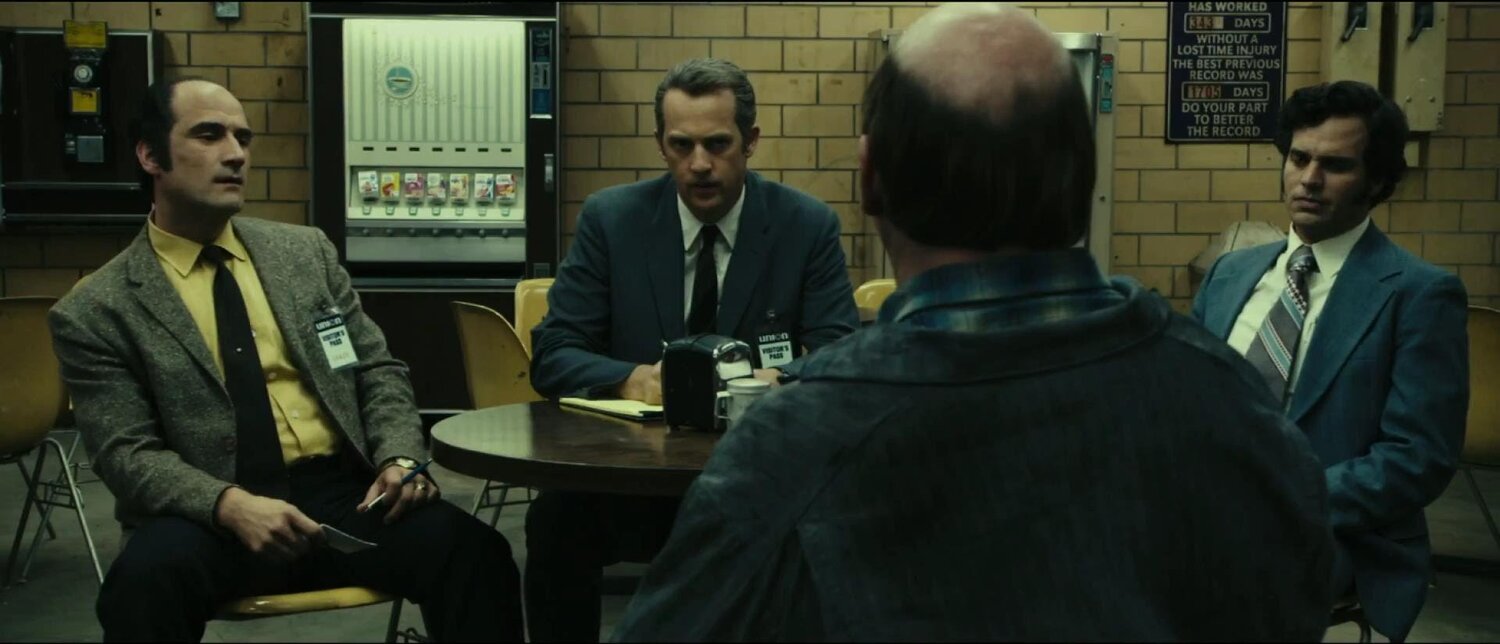
David Fincher’s “Zodiac” is a crime thriller that follows the manhunt for the Zodiac Killer, a serial killer who terrorized the San Francisco Bay Area in the late 1960s and early 1970s. Robert Downey Jr. plays Paul Avery, a crime reporter for the San Francisco Chronicle who becomes deeply involved in the case. Downey’s portrayal of Avery is a standout in the film, showcasing his ability to deliver complex performances that blend charisma, vulnerability, and a descent into obsession.
“Zodiac” is celebrated for its meticulous attention to detail, its atmospheric tension, and its exploration of the obsessions that drive its characters. Downey’s Avery is a character who embodies the toll that the case takes on those who are caught in its web. His descent from a confident reporter to a man haunted by his involvement with the Zodiac case provides a compelling arc that Downey portrays with depth and nuance.

The film received critical acclaim for its direction, screenplay, and performances, especially Downey’s. His work in “Zodiac” demonstrated his skill at navigating the intricacies of character-driven drama, further establishing him as an actor capable of tackling a wide range of roles in different genres.
“Zodiac” also underscored Downey’s ability to work within ensemble casts, standing out while contributing to a cohesive group performance. His portrayal of Paul Avery added a crucial human element to the film, highlighting the personal costs of the Zodiac’s reign of terror.
6. Kiss Kiss Bang Bang (2005)
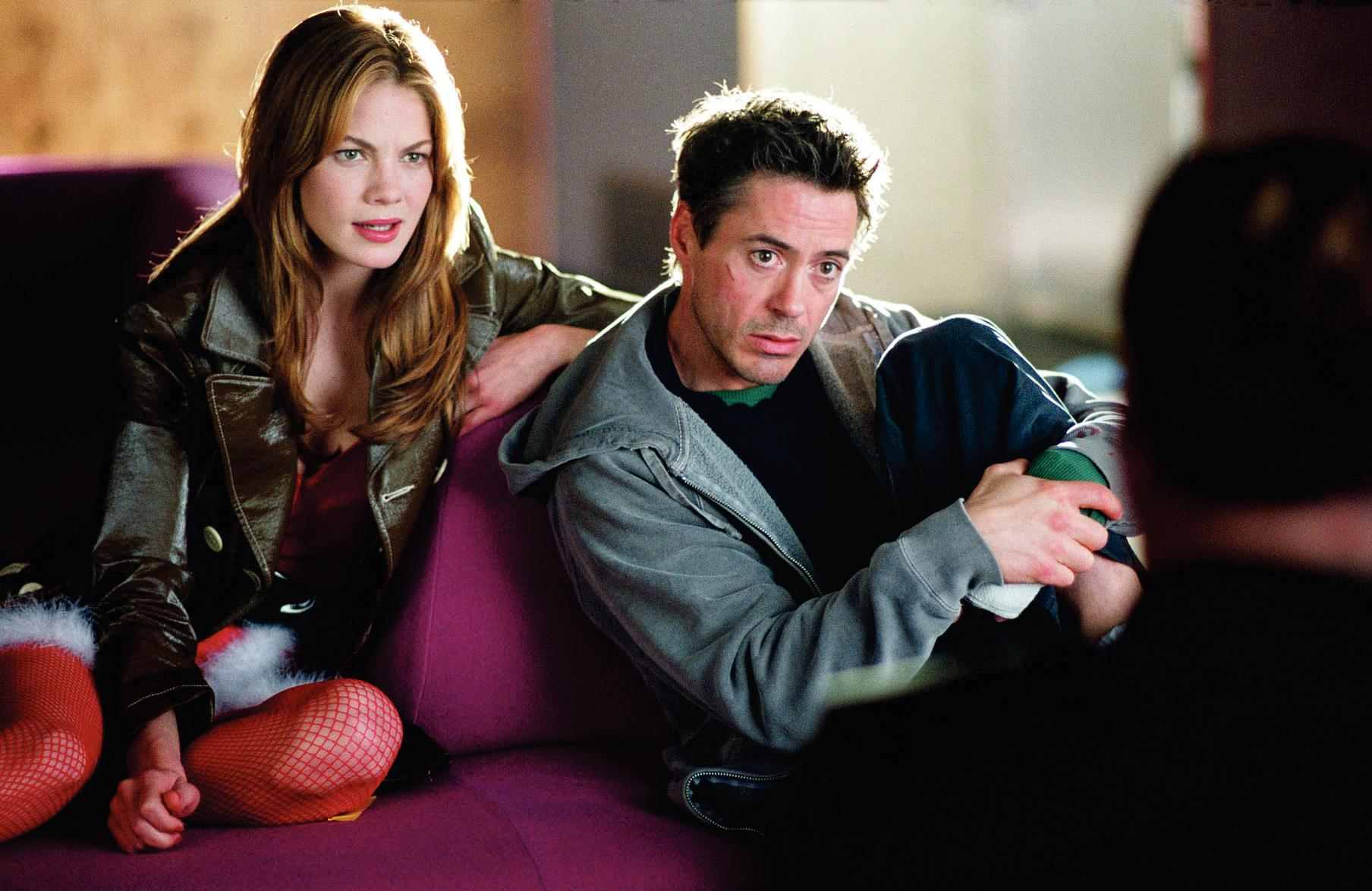
“Kiss Kiss Bang Bang” marks a pivotal moment in Robert Downey Jr.’s career, serving as a significant comeback role and showcasing his dynamic presence and impeccable comedic timing. Directed by Shane Black, the film is a neo-noir black comedy that cleverly parodies Hollywood’s detective genre conventions. Downey stars as Harry Lockhart, a petty thief who, in a twist of fate, is mistaken for an actor and thrust into a murder mystery alongside a private investigator, played by Val Kilmer, and his childhood crush, Harmony Faith Lane, portrayed by Michelle Monaghan.
Downey’s performance as Lockhart is both hilarious and heartfelt, capturing the character’s bewildered innocence and sharp wit. The film’s fast-paced dialogue and intricate plot allowed Downey to display his range, moving effortlessly between slapstick humor, action, and moments of genuine emotion. “Kiss Kiss Bang Bang” received critical acclaim, particularly for Downey’s role, which was seen as a reminder of his natural talent and charisma after years of personal and professional turmoil.

The chemistry between Downey and Kilmer is a highlight of the film, with their characters’ banter providing much of the comedic relief. Downey’s ability to play off his co-stars, delivering lines with a perfect mix of sarcasm and sincerity, solidified his reputation as a master of comedic timing. The film, while not a blockbuster hit, garnered a cult following and is often credited with relaunching Downey’s career, leading to his casting in “Iron Man” and subsequent rise to superstardom.
7. The Judge (2014)
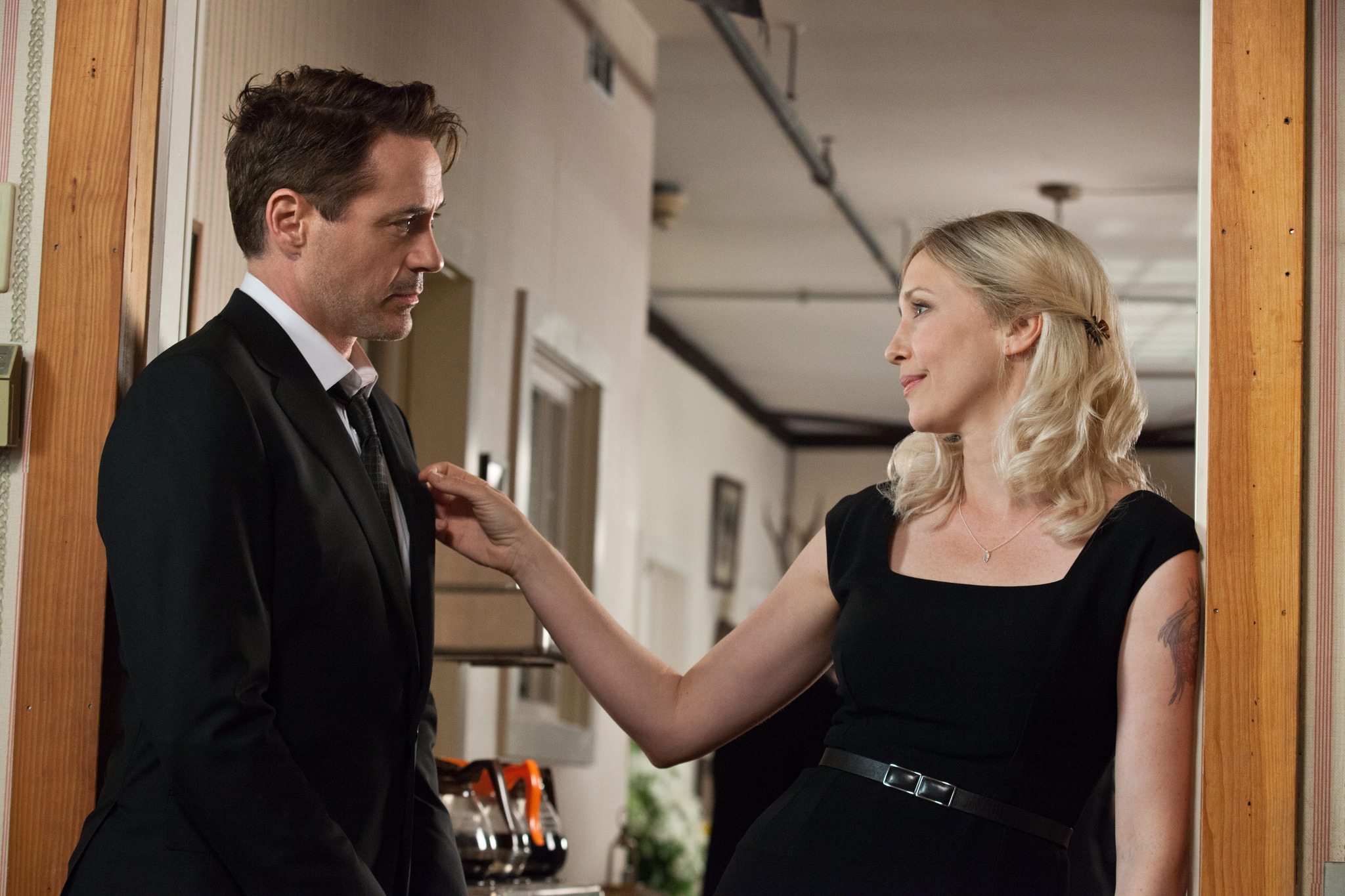
“The Judge” offers a different facet of Robert Downey Jr.’s acting prowess, showcasing his ability to delve into more dramatic and emotionally charged roles. In this film, Downey portrays Hank Palmer, a successful but morally ambiguous defense attorney who returns to his hometown for his mother’s funeral and is subsequently drawn into a legal battle to defend his estranged father, the town’s judge, played by Robert Duvall, accused of murder.
The film explores complex family dynamics, the search for truth, and the possibility of redemption. Downey’s performance is layered, reflecting Hank’s internal conflict and journey toward understanding and reconciliation with his father. The interactions between Downey and Duvall are particularly powerful, highlighting their characters’ fraught relationship and eventual mutual respect.

“The Judge” received mixed reviews from critics, but Downey’s and Duvall’s performances were widely praised. The film demonstrated Downey’s versatility as an actor, proving his capability to anchor a drama with as much depth and nuance as his more widely recognized roles in action and comedy.
8. A Scanner Darkly (2006)
A Scanner Darkly (2006)”A Scanner Darkly,” a sci-fi thriller based on Philip K. Dick’s novel, features Downey in a supporting role as James Barris, a drug addict living in a dystopian future. The film’s use of rotoscope animation to create a surreal, shifting reality allowed Downey to experiment with a character who is both manipulative and tragic.

His performance added a layer of intrigue and unpredictability, highlighting his capacity to stand out even in an ensemble cast. “A Scanner Darkly” is notable for its innovative animation and its exploration of themes such as identity, surveillance, and addiction, with Downey’s role emphasizing his versatility and ability to adapt to unique cinematic visions.
9. The Soloist (2009)
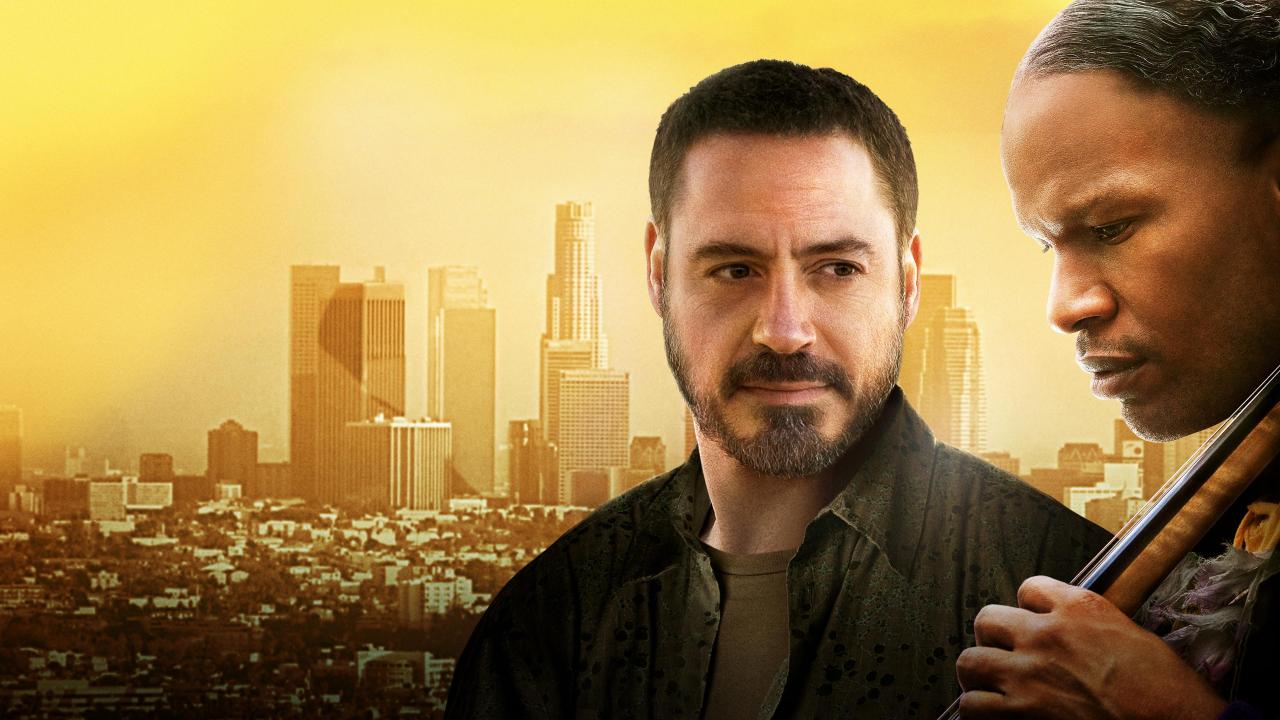
“The Soloist,” directed by Joe Wright, features Downey as Steve Lopez, a Los Angeles Times journalist who forms an unlikely friendship with Nathaniel Ayers (played by Jamie Foxx), a Julliard-trained musician living on the streets with schizophrenia. The film is based on the true story of Lopez’s articles about Ayers, exploring themes of mental illness, homelessness, and the redemptive power of music and friendship.
Downey’s portrayal of Lopez is grounded and empathetic, capturing the journalist’s determination to tell Ayers’ story and the transformative effect of their friendship on both men. The film showcases Downey’s ability to engage in subtle, nuanced performances, reflecting the complexities of his character’s journey from skepticism to advocacy.

“The Soloist” received praise for its performances, particularly Downey’s, and its handling of serious social issues. The film underscores Downey’s talent for engaging with emotionally resonant material, further demonstrating his versatility and depth as an actor.
“The Soloist,” directed by Joe Wright, features Downey as Steve Lopez, a Los Angeles Times journalist who forms an unlikely friendship with Nathaniel Ayers (played by Jamie Foxx), a Julliard-trained musician living on the streets with schizophrenia. The film is based on the true story of Lopez’s articles about Ayers, exploring themes of mental illness, homelessness, and the redemptive power of music and friendship.
Downey’s portrayal of Lopez is grounded and empathetic, capturing the journalist’s determination to tell Ayers’ story and the transformative effect of their friendship on both men. The film showcases Downey’s ability to engage in subtle, nuanced performances, reflecting the complexities of his character’s journey from skepticism to advocacy.
“The Soloist” received praise for its performances, particularly Downey’s, and its handling of serious social issues. The film underscores Downey’s talent for engaging with emotionally resonant material, further demonstrating his versatility and depth as an actor.
10. Less Than Zero (1987)
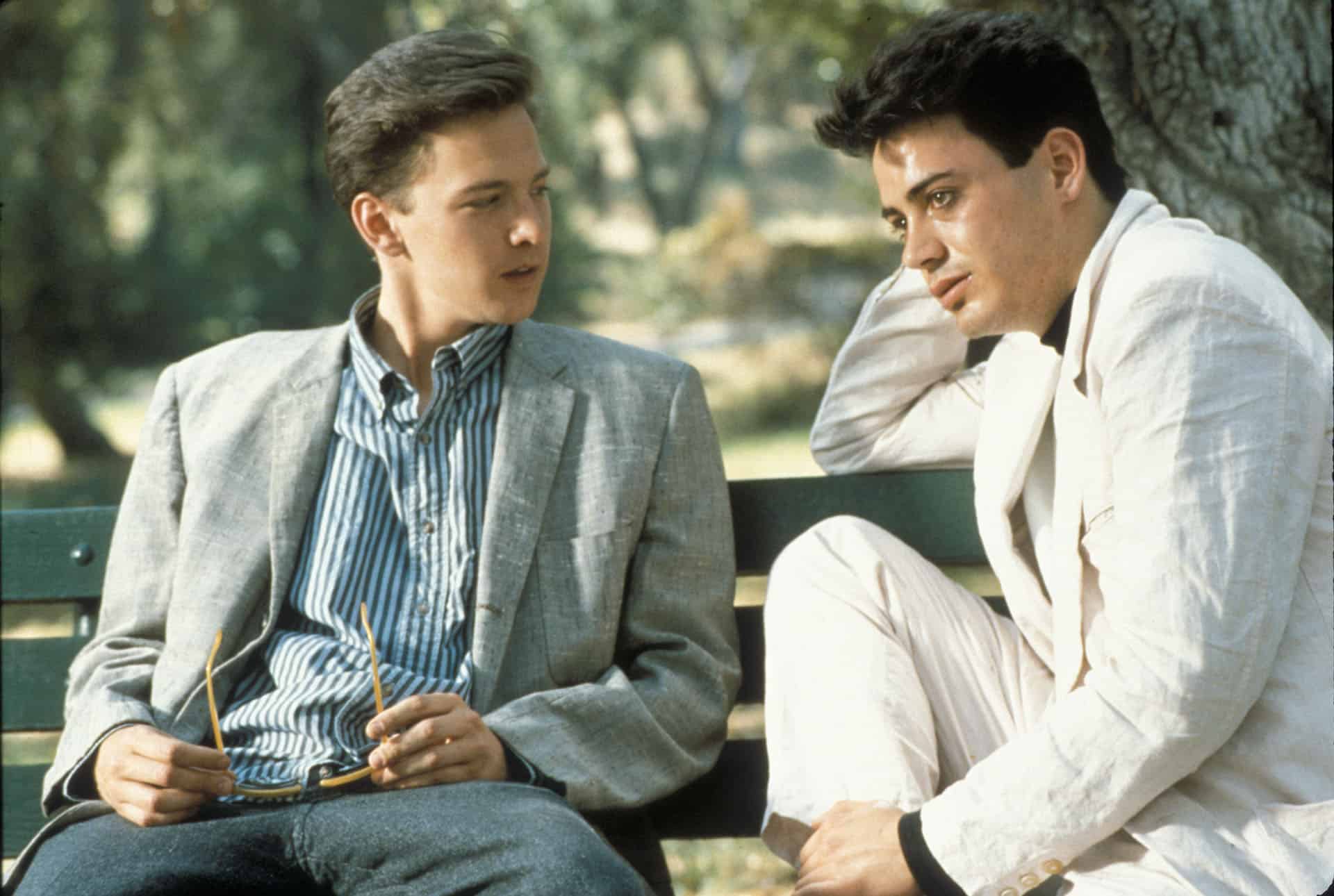
“Less Than Zero,” one of Downey’s early roles, features him as Julian Wells, a young man whose life is spiraling out of control due to drug addiction. The film is a stark portrayal of 1980s excess and the dark side of youth culture in Los Angeles. Downey’s raw and compelling performance captured the vulnerability and desperation of his character, foreshadowing his own future struggles. “Less Than Zero” remains a powerful reminder of his early talent and the themes of redemption that would recur throughout his career.

Robert Downey Jr.’s Legacy and Influence
Robert Downey Jr.’s career is a narrative of talent, resilience, and transformation. His roles have spanned a wide spectrum of genres, showcasing his ability to adapt and excel in diverse characters. Through his performances, Downey has left an indelible mark on Hollywood, influencing a generation of actors and filmmakers. His work in the MCU has not only redefined superhero cinema but also established him as a cultural icon, whose portrayal of Tony Stark/Iron Man will be remembered as a defining moment in film history.
Downey’s journey reflects the power of second chances and the potential for personal and professional redemption. His legacy extends beyond his filmography, inspiring those who face their own struggles, and demonstrating the impact of perseverance, creativity, and passion for one’s craft.
As we reflect on the Top 10 movies of Robert Downey Jr., it’s clear that his contribution to cinema is profound and multifaceted. From groundbreaking blockbusters to intimate dramas, his work encompasses a range of human experiences, emotions, and stories, making him one of the most versatile and compelling actors of his generation. Robert Downey Jr.’s influence on contemporary cinema is undeniable, and his legacy will continue to inspire and entertain audiences for years to come.


